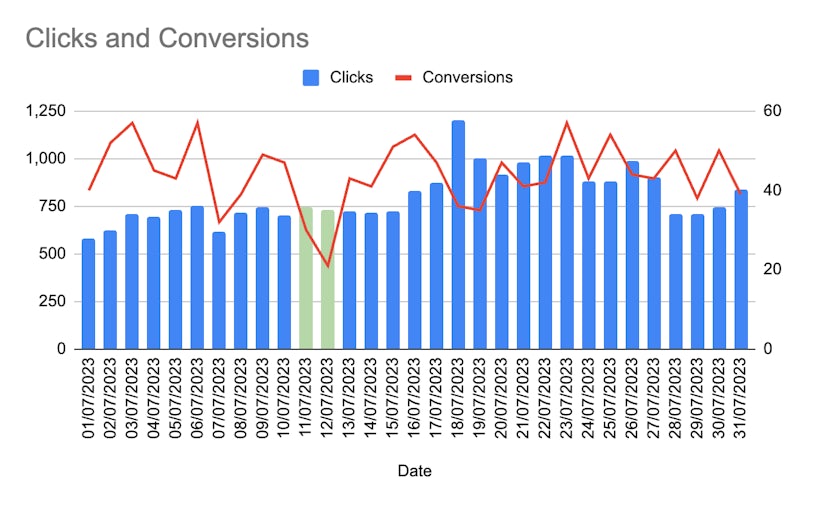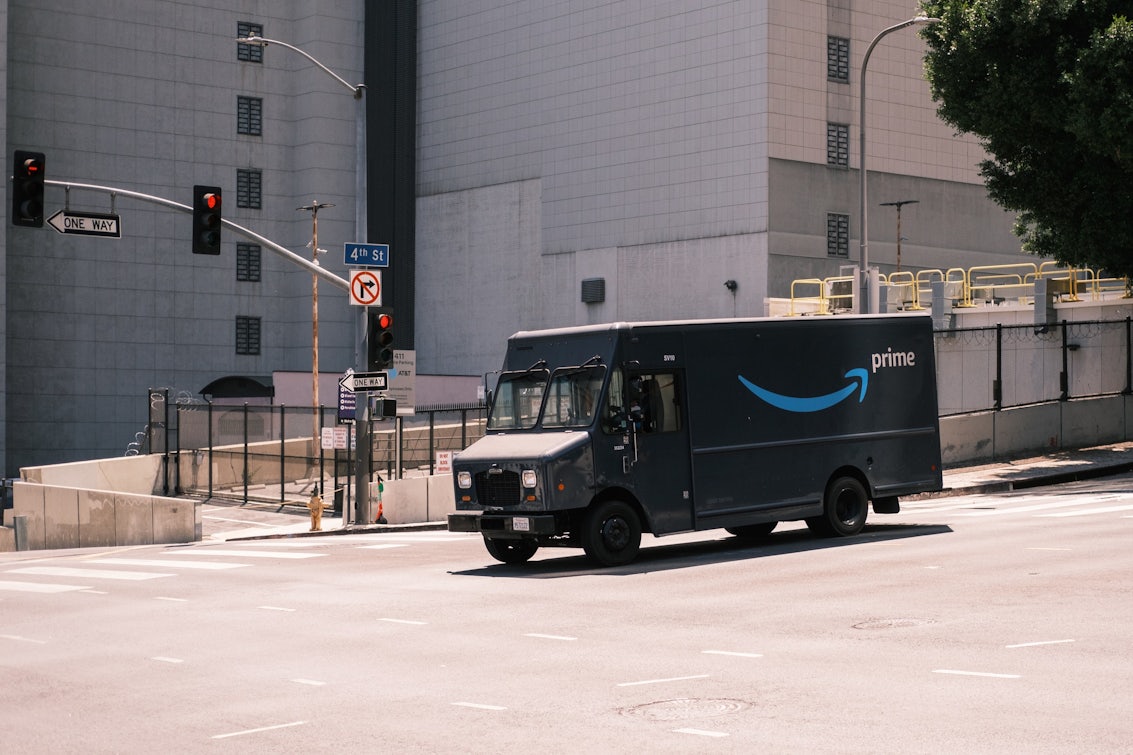Amazon Prime Day takes place once a year, usually in July, and offers brands the opportunity to capitalise on the rush of consumers in search of deals online. The temporary increase in competition with Amazon can pose problems for advertisers, particularly in terms of spend inflation. But it’s equally possible to excel on Prime Day and see record sales with the right approach.
Over the course of this guide, we explore what impact this annual event can have on your brand’s performance – and what you can do to compete, even if you don’t currently sell through Amazon. Read on for actionable tips on maximising your Prime Day revenue from our in-house experts.
NOTE: This post has been updated for 2025 👍
- What is Amazon Prime Day?
- When is the next Amazon Prime Day?
- What if my brand isn't on Amazon?
- Potential impact on your brand’s performance
- How to compete on Amazon Prime Day
- 1. Tackling spend inflation and low conversions
- What you should do
- 2. Countering Amazon's exclusive, member-only offers
- What you should do
- 3. Capitalising on the chance to promote brand loyalty
- What you should do
- 4. Making sure your brand stacks up?
- What you should do
- The wider business impact
- Stand out on Amazon Prime Day with Impression
We’ve helped hundreds of brands to maximise their Amazon Prime Day performance and make the most of this short window of opportunity each year. Check out our paid media agency page to discover how we can help your business or reach out to us to learn more.

What is Amazon Prime Day?
Originally starting in 2015, Amazon Prime Day is a 2-day event whereby Amazon showcases numerous offers and deals for its prime members to gain exclusive access – this is the 13.4 million people in the UK with an Amazon Prime subscription.
When is the next Amazon Prime Day?
Amazon Prime Day is expected to take place on 15th – 16th July 2025.
According to figures from t3, Amazon Prime Day is the 2nd highest revenue-driving day after Black Friday, so with this date rapidly approaching, be prepared.
What if my brand isn’t on Amazon?
If your brand isn’t using Amazon ads or Amazon as a reseller, you’re probably wondering how you can compete during this key selling event. To ensure you aren’t losing customers to Amazon, it will be crucial for you to find a different way to get in front of your audience during this time, especially if you are specialising in electronics or smart technology devices.
Looking to make yourself heard above the noise? Push your own offers and deals across platforms such as Google Search, Shopping, Display, YouTube and social media platforms (and read on for our top tips on how to compete through these channels).
Potential impact on your brand’s performance
Lower pricing on Amazon can impact your conversion rate over these dates, despite overall demand not fluctuating too much. This is certainly something we’ve seen for our own ecommerce clients, and is one to watch out for closely when Prime Day rolls around. It can lead to your bid strategies starting to overspend to reach an unrealistic ROAS or CPA target, which normally results in inefficient spend.

How to compete on Amazon Prime Day
1. Tackling spend inflation and low conversions
With Amazon attracting a higher number of users and customers browsing to make sure they are getting the best deal, it can inflate spending and low-converting traffic.
What you should do
Reduce budgets if you know your pricing is not in line with Amazon, to ensure your account is still performing as efficiently as it can do and tighten your targets to restrict your campaigns from overspending.
Also, applying a seasonality bid adjustment to instruct your bidding strategies that the account will likely see a drop in conversion rate over these days. In Google Ads, you can do this by going to ‘Tools & Settings’ > ‘Bid Strategies’ > ‘Advance Controls’. You’re then able to provide information on start and end Days/Times, Campaign types affected, devices and how much of an increase/decrease in CvR is expected.
To help with setting the correct conversion rate adjustment, take a look back at historical performance when Amazon Prime has previously run and how your account has performed (refer to dates at the top of this blog.)
2. Countering Amazon’s exclusive, member-only offers
Amazon Prime Day entices users by launching exclusive, members-only offers. This approach risks turning off non-Prime members who don’t want to have to pay a monthly subscription to receive deals.
What you should do
If your customers are the ones unlikely to pay a monthly subscription cost, look at what you are promoting across your channels and tailor your messaging and USPs to speak to these people, for example, no account needed, same-day delivery, price matched etc.
3. Capitalising on the chance to promote brand loyalty
Prime Day is not only an event for Amazon to drive an eye-watering amount of sales, but it is also a key time to increase its number of Prime users and subscriptions. You too should think of the short- and long-term gains a strong offer period can bring.
What you should do
If you have an enticing loyalty programme, scheme or card, promote it! Make sure your current customers know what’s on offer and be explicit about how you will reward them by continuing to shop with you. If you have a newsletter, encourage users to sign up for it to be the first to know about future sales and offers. By enticing people to sign up for your loyalty scheme or newsletter, you’ll also be able to build your first-party data pool which should be a key focus as we prepare for the depreciation of the third-party cookie.

4. Making sure your brand stacks up
Shopping around for the best deal becomes even more prevalent during promotional events like Black Friday and Prime Day. Consumers have become more demanding and less brand loyal as more choice is available online. In this context, it’s more important than ever to compare how your advertising stacks up against larger players like Amazon, and make adjustments accordingly.
What you should do
Broaden your channel use and reassess whether you are utilising your budget to speak to customers at different stages in their journey, from the initial research phase (Google Search or YouTube) to purchase (Shopping or Search). Knowing that users might head straight to Amazon to look for the cheapest offer, make sure you dedicate time to tweaking your budget to align with the customer’s journey ahead of Prime Day taking place.
Optimise your website homepage to call out your offers and the products which you are price matching, putting them in positions that are clear to see. If your company has a brick-and-mortar store, use location campaigns and Google My Business/Google Maps to show customers how close they are to a store, prompting them to visit. For Shopping campaigns, really push the use of local inventory ads. Customers want quick, easy and convenient shopping.
The wider business impact
Whilst Amazon Prime Day lasts just 48 hours, making sure you’re competitive during this time can drive long-term gains for your business.
Promoting your offers across various platforms and informing your customers of what they might miss out on could drive visits to your website in the future to check out your deals. Customers might check back to see whether your offer has launched yet and may also compare your offer against multiple other websites. For this reason, it’s worth making a note of this when analysing your performance to remove any concern about conversion rates dipping during competitive offer periods like Amazon Prime Day.
Your efforts will also help you to build an audience pool to retarget during other events such as summer sales, Black Friday, Boxing Day sales, January clearance and ad hoc 1 day-only sales. To ensure your ads are relevant, tailor the forms on your site to capture information about a user’s preferences, demographics or interests. By capturing this information you can create bespoke offers to specifically target a certain group of people. By honing in on a specific group, you will likely see the engagement rate and conversion rate of your campaigns increase, ultimately driving more revenue.
If you’re new to running promotions, be open to a test-and-learn approach. When your campaign has ended, assess which offers and messages resonated the most with your customers and drove the most revenue. Was it pushing a percentage % off or money £ off? Was it multiple buy promotions, discounts or price matching? There’s lots to explore here. Build your future offers based on these insights to grow traffic, increase engagement and in turn, maximise sales.
Focusing on strong messaging, increasing your visibility, and shouting about your brand’s reputation alongside competitive deals will put you in a solid position to compete against Amazon during Prime Day.

Stand out on Amazon Prime Day with Impression
With over a century of combined paid media experience, our team is well placed to help you capitalise on the commercial opportunities presented by Amazon Prime Day each year. Head over to our paid media agency page for a flavour of what we can do or get in touch for a free consultation.





